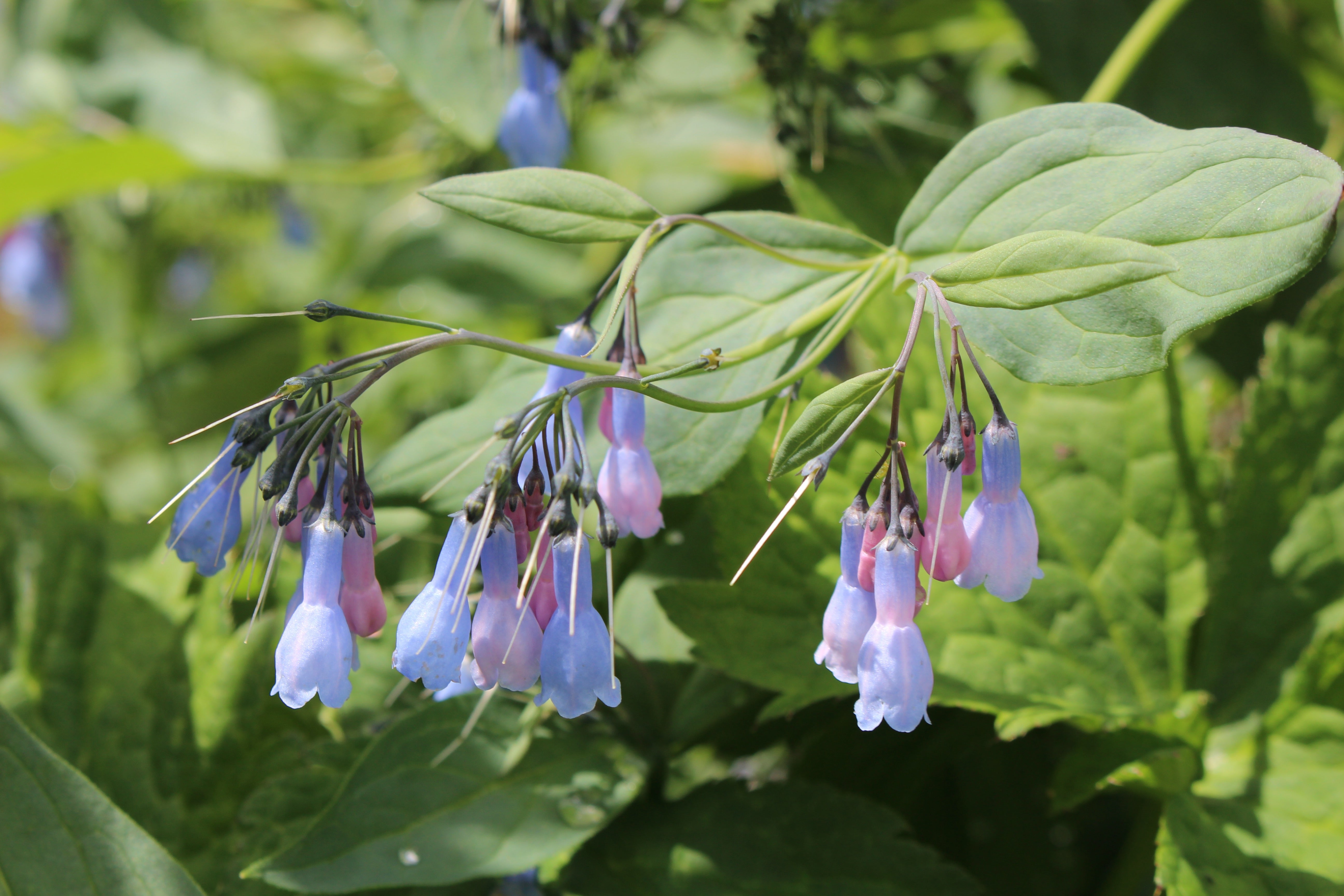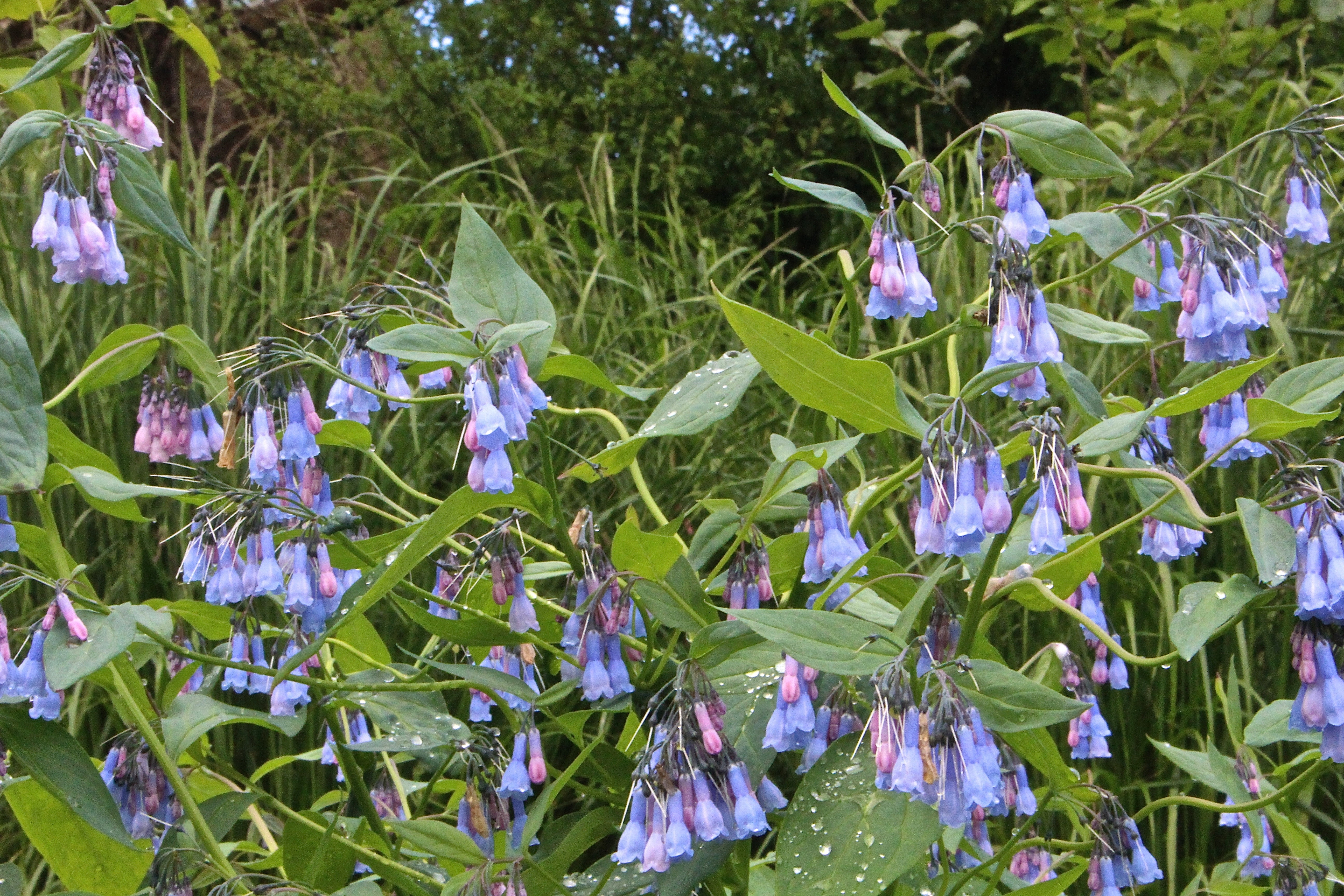Mertensia virginica
Approx. 0.5 litre pot
About this cultivar:
Mertensia virginica commonly occurs in moist, rich woods and river floodplains but grows almost anywhere in my experience. And thankfully so! Commonly called Virginia bluebell (hence the species name honouring Virginia, USA) this erect, clump-forming perennial features lovely loose, terminal clusters of pendulous, trumpet-shaped, flowers which bloom in early spring. Flower buds are pink and flowers emerge with a pinkish cast before turning blue or sometimes pink or white. Foliage dies to the ground by mid-summer as the plant goes dormant.
The stamens and stigma are spaced too far apart for self-fertilization. The flower can be pollinated by bumblebees but, due to its funnel shape bumblebees must hover, making the bumblebee a rare pollinator. Butterflies are the most common pollinators because they can easily perch on the edges and still enjoy the nectar.
In 1993 it received Royal Horticultural Society Award of Garden Merit (RHS AGM). What took them so long?!?!
- Position: Full sun, Partial shade
- Soil: Almost any soil, grows well in Ballyrobert
- Flowers: March, April, May
- Other features: Royal Horticultural Society Award of Garden Merit (RHS AGM)
- Hardiness: Fully hardy, grows well in Ballyrobert, H4 - Hardy through most of the UK (-10 to -5°C)
- Habit: Clump forming
- Foliage: Semi Evergreen
- Height: 15 - 45 cm (0.5 - 1.5 ft)
- Spread: 15 - 45 cm (0.5 - 1.5 ft)
- Time to full growth: 2 to 5 years
- Plant type: Herbaceous Perennial
- Colour: Green, blue, pink
- Goes well with: Hosta, Heuchera, Hellebore, ferns, and Ophiopogon
About this genus:
Mertensia is a genus of flowering plants in the family Boraginaceae (the borage- or forget-me-not family).They are perennial herbaceous plants with blue or sometimes white flowers that open from pink-tinged buds. Such a change in flower colour is common in Boraginaceae and is caused by an increase of pH in the flower tissue. Mertensia is one of several plants that are commonly called bluebell. In spite of their common name, the flowers are usually salverform (trumpet-shaped) rather than campanulate (bell-shaped).
Mertensia is native to most of North America and to a large part of Asia from western China to northeastern Russia, mostly restricted to alpine, subalpine, and montane habitats.
First described in 1753 by Swedish botanist Carl Linnaeus in his landmark Species Plantarum. Linnaeus placed five species in the genus Pulmonaria. However, in 1797 Albrecht Wilhelm Roth separated what are now M. virginica, M. maritima, and M. sibirica from Pulmonaria to form the genus Mertensia, named after the German botanist, Franz Carl Mertens (1764 - 1831). It got worse, there are currently about 45 to 150 species, depending on who you ask.
As you’d expect from the forget-me-not family Mertensia are easy to grow and flower for a long long time. Great for a natural feel in almost any soil from full-sun to part shade but best in and around trees and hedges in my opinion. Others may differ!
Try pairing your Mertensia with other shade tolerant, low growing plants like Hosta, Heuchera, Hellebore, ferns, and Ophiopogon.




